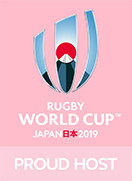
Pickled plum

As for the plums grown in Kinan area (Southern part of Wakayama Prefecture) such as Tanabe-city, Minabe-cho, and Minabegawa villege, they are by far number one both in the amount grown and sold in Japan.
Kishu dried plums are the most popular of their kind, with a long history of production, dating back to when the region was assisted by the government during the Edo period.
There are two varieties of plums.
One-most suited for pickles and the best of its kind - is called nanko-ume.
The other, a first class blue plum most suitable for plum wine and juice, is known as gojiro-ume.
Nanko-ume, with its thin pericarp and large pieces, is the base for kishu dried plum, a very popular delicacy.
Each plum is hand picked during the rainy season and pickled for one and a half months with only natural salt.
After letting the pickled plums mature, each plum is then dried under the sun for three whole days and three whole nights.
After being pickled again, you now have the delicious and unique Kishu ume-boshi (salted, pickled plum).
Kishu dried plums are the most popular of their kind, with a long history of production, dating back to when the region was assisted by the government during the Edo period.
There are two varieties of plums.
One-most suited for pickles and the best of its kind - is called nanko-ume.
The other, a first class blue plum most suitable for plum wine and juice, is known as gojiro-ume.
Nanko-ume, with its thin pericarp and large pieces, is the base for kishu dried plum, a very popular delicacy.
Each plum is hand picked during the rainy season and pickled for one and a half months with only natural salt.
After letting the pickled plums mature, each plum is then dried under the sun for three whole days and three whole nights.
After being pickled again, you now have the delicious and unique Kishu ume-boshi (salted, pickled plum).
TM © Rugby World Cup Limited 2015. All rights reserved.
)